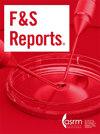Utero-placental (vascular) development throughout pregnancy in women with polycystic ovary syndrome: the Rotterdam Periconceptional Cohort
IF 2.2
引用次数: 0
Abstract
Objective
To study utero-placental vascular development from the first trimester onward in pregnant women with polycystic ovary syndrome (PCOS) and successful live births, compared with pregnant women without PCOS, after in vitro fertilization/intracytoplasmic sperm injection (IVF/ICSI) treatment or natural conception.
Design
Prospective periconceptional cohort study in a single tertiary hospital.
Subjects
Participants with ongoing pregnancies with available serial three-dimensional ultrasound scans were divided into 3 groups: women with PCOS; subfertile group, pregnancies who conceived via IVF/ICSI without PCOS; and fertile group, pregnancies who conceived naturally without PCOS.
Exposure
PCOS diagnosis.
Main Outcome Measures
During the first-trimester, placental volume (PV) and utero-placental vascular volume (uPVV) were measured offline in three-dimensional ultrasound volumes obtained at 7, 9, and 11 weeks’ gestational age (GA) using Virtual Organ Analysis and Virtual Reality. Serial measurements were obtained from uterine artery pulsatility and resistance indices (UtA PI and UtA RI) measured by pulsed-wave Doppler ultrasound as well as mean arterial pressure at 7, 9, 11, 13, 22, and 32 weeks’ GA. Similarly, the umbilical artery PI and RI were measured at 22 and 32 weeks’ GA.
Results
We included 206 pregnancies in our study (PCOS n = 41; subfertile n = 63; fertile n = 102). Significantly negative associations were observed between PCOS and placental measurements (PV, uPVV, and their ratio) at 11 weeks’ GA with both the subfertile and fertile group as reference (e.g., uPVV 11 weeks’ GA: betaPCOS-fertile –0.18 ∛cm3 [95% confidence interval: –0.30; –0.06]). UtA PI and RI were significantly lower throughout pregnancy in women with PCOS compared with the subfertile and fertile group. Women with PCOS showed a negative association with umbilical artery PI and RI at 32 weeks’ GA compared with the subfertile and fertile group as reference.
Conclusion
Women with PCOS show decreased first-trimester placental development at 11 weeks’ GA compared with pregnancies without PCOS in the subfertile and fertile group. Additionally, these women also display lower UtA PI and UtA RI compared with women without PCOS. These results support the hypothesis that PCOS impacts early placental development, potentially contributing to adverse pregnancy outcomes. Further research should focus on the underlying pathophysiology and the modifying role of IVF/ICSI treatment.
多囊卵巢综合征妇女妊娠期子宫-胎盘(血管)发育:鹿特丹围孕期队列
目的 研究多囊卵巢综合征(PCOS)孕妇与无 PCOS 孕妇在体外受精/卵胞浆内单精子显微注射(IVF/ICSI)治疗或自然受孕后,从妊娠头三个月开始的子宫胎盘血管发育情况,并与之进行比较。受试者将有序列三维超声扫描结果的正在妊娠的受试者分为三组:多囊卵巢综合征妇女;亚受孕组,通过体外受精/卵胞浆内单精子显微注射受孕而未患多囊卵巢综合征的孕妇;受孕组,自然受孕而未患多囊卵巢综合征的孕妇。主要结果测量在妊娠头三个月,利用虚拟器官分析和虚拟现实技术离线测量胎盘容积(PV)和子宫胎盘血管容积(uPVV),三维超声容积在孕龄(GA)7、9 和 11 周时获得。通过脉冲波多普勒超声测量子宫动脉搏动和阻力指数(UtA PI 和 UtA RI)以及孕龄 7、9、11、13、22 和 32 周时的平均动脉压,获得了连续测量值。同样,脐动脉 PI 和 RI 也是在孕 22 周和 32 周时测量的。以亚孕期组和可孕期组为参照,观察到多囊卵巢综合征与孕 11 周时的胎盘测量值(PV、uPVV 及其比值)之间存在显著负相关(例如,孕 11 周时的 uPVV:βPCOS-可孕期 -0.18 ∛cm3 [95% 置信区间:-0.30;-0.06])。与亚孕期组和孕期组相比,多囊卵巢综合征妇女在整个孕期的 UtA PI 和 RI 都明显较低。结论与未患多囊卵巢综合征的亚孕期组和可孕期组相比,患多囊卵巢综合征的女性在亚孕期组和可孕期组中,在妊娠 11 周时的脐动脉 PI 和 RI 与妊娠 32 周时的脐动脉 PI 和 RI 呈负相关。此外,与未患多囊卵巢综合征的妇女相比,这些妇女的 UtA PI 和 UtA RI 也较低。这些结果支持了多囊卵巢综合症影响胎盘早期发育,从而可能导致不良妊娠结局的假设。进一步的研究应关注其潜在的病理生理学以及 IVF/ICSI 治疗的调节作用。
本文章由计算机程序翻译,如有差异,请以英文原文为准。
求助全文
约1分钟内获得全文
求助全文

 求助内容:
求助内容: 应助结果提醒方式:
应助结果提醒方式:


